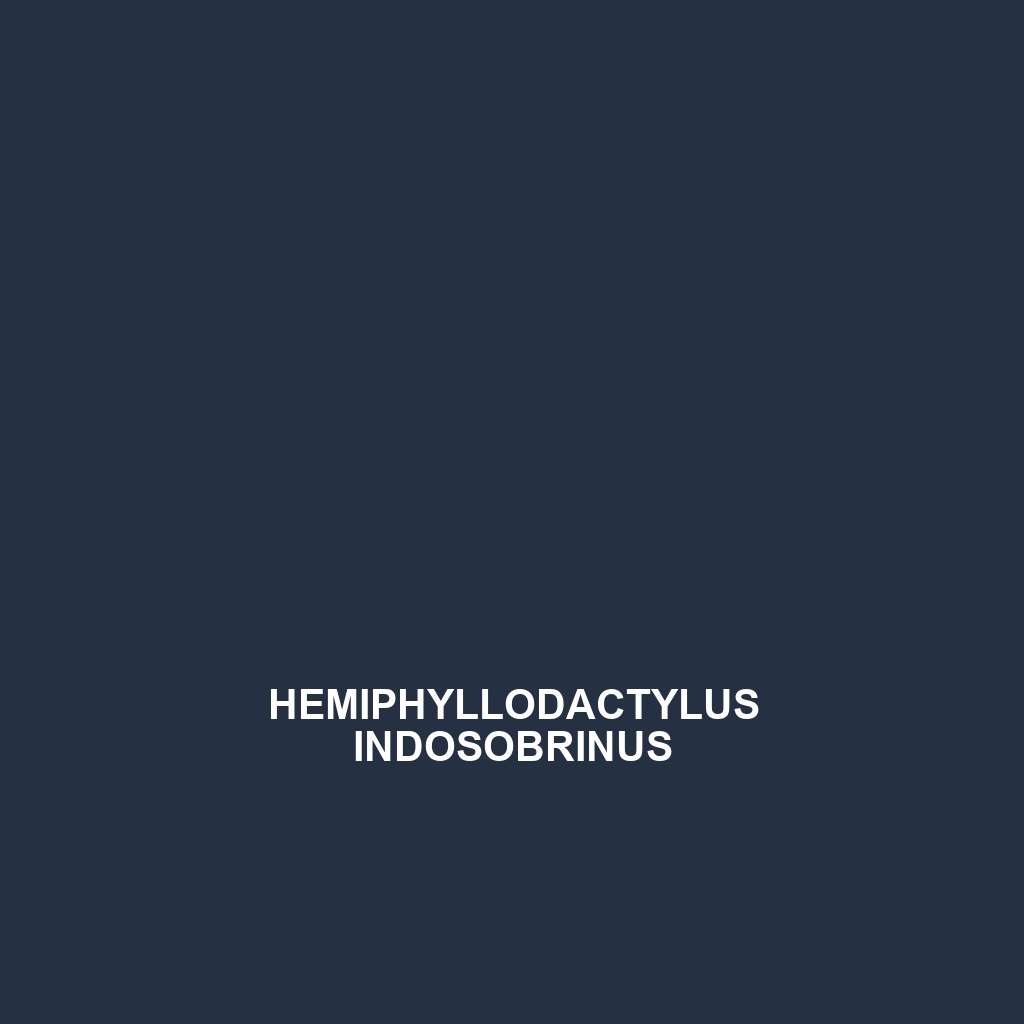Common Name
Hemiphyllodactylus huishuiensis
Scientific Name
Hemiphyllodactylus huishuiensis
Habitat
Hemiphyllodactylus huishuiensis primarily inhabits the lush, humid regions of southern China, particularly in the Rainforests of Guangxi province. These geologically diverse areas provide a warm, temperate climate that is ideal for the species, characterized by high humidity and ample rainfall, creating the perfect conditions for survival. This species favors living in leaf litter and beneath rocks within forest understories. The typical environmental conditions include dense vegetation, a microhabitat rich in organic material, and relatively stable temperatures, which all contribute to a supportive ecosystem. Additionally, some populations of Hemiphyllodactylus huishuiensis have been observed in surrounding subtropical regions, making them adaptable to slightly varying habitats.
Physical Characteristics
Hemiphyllodactylus huishuiensis is a small gecko species, typically reaching sizes of about 5 to 8 centimeters in length. The species exhibits a slender body shape, which allows it to navigate smoothly through narrow spaces in its forest habitat. The coloration ranges from light beige to dark brown with subtle patterns that provide effective camouflage against predators. Notably, the gecko has long digits with adhesive pads that aid in climbing, enhancing its mobility in vertical spaces such as tree trunks and branches. Its unique feature includes a well-developed tail used for balance and as a fat storage organ, crucial for its survival in nutrient-poor environments.
Behavior
This species is predominantly nocturnal, actively foraging under the cover of darkness. The typical behavior observed in Hemiphyllodactylus huishuiensis includes agile movements, allowing it to catch insects and evade predators effectively. Mating rituals are often conducted during the rainy season, where males engage in courtship displays, which may involve vocalizations and tail waving to attract females. Social interaction among individuals tends to be minimal, with most of the time spent alone in their preferred microhabitats. During daylight hours, they usually remain hidden to protect themselves from potential threats, showcasing their ability to blend into their surroundings.
Diet
Hemiphyllodactylus huishuiensis is primarily insectivorous, consuming a diet rich in various invertebrates. Their diet predominantly consists of small insects, including ants, beetles, and moths, which they hunt with precision due to their keen eyesight and rapid reflexes. They employ a sit-and-wait strategy to capture prey, making them effective hunters. The species has been observed to also consume small arachnids, contributing to their nutrition. They exhibit opportunistic feeding habits, adapting to the available food sources in their immediate habitat.
Reproduction
The reproductive cycle of Hemiphyllodactylus huishuiensis typically peaks during the warmer months, aligning with optimal weather conditions for offspring survival. Mating often occurs during late spring, with females laying clutches of up to two eggs in secure, moist locations. The gestation period averages around 40 to 60 days, after which hatchlings emerge fully formed and miniature versions of adults. Parental care is limited post-hatching, as the young are left to fend for themselves almost immediately. This reproductive strategy enhances the survival rate of the species in a competitive environment.
Conservation Status
Currently, Hemiphyllodactylus huishuiensis is classified as “Least Concern” according to the IUCN Red List. However, specific population trends remain unclear due to habitat loss and environmental degradation resulting from deforestation and urbanization in its native range. Conservation efforts focusing on habitat preservation are vital to sustaining the populations of this species. Continued research and monitoring are essential to ensure that environmental changes do not lead to further decline.
Interesting Facts
One of the most fascinating aspects of Hemiphyllodactylus huishuiensis is its ability to regenerate its tail after losing it—a vital survival skill that helps them escape from predators. Additionally, their unique adaptation to blend seamlessly with the leaf litter in their habitat serves not only as camouflage but helps regulate their body temperature, enhancing their ability to survive in fluctuating environments. These geckos also engage in territorial displays to deter rivals, showcasing complex social interactions despite their generally solitary lifestyles.
Role in Ecosystem
As a small insectivore, Hemiphyllodactylus huishuiensis plays a crucial role in controlling the insect population, maintaining a balanced ecosystem. They contribute to nutrient cycling by breaking down organic matter while feeding, and they serve as prey for larger predators, thus integrating deeply into the food web. Their presence indicates a healthy environment, and as such, they can be considered indicators of ecological balance. The species’ interactions with other organisms, including both prey and predators, highlight its importance within its habitat, showcasing the interdependence of species.
